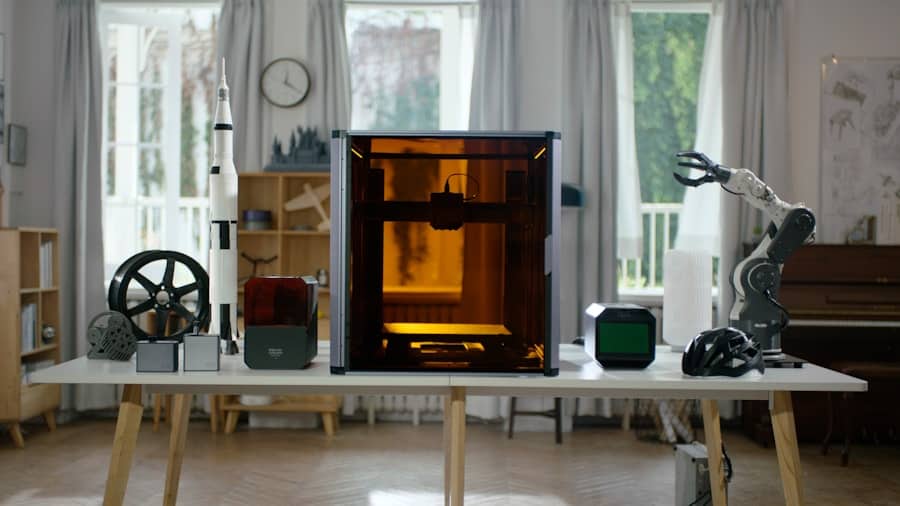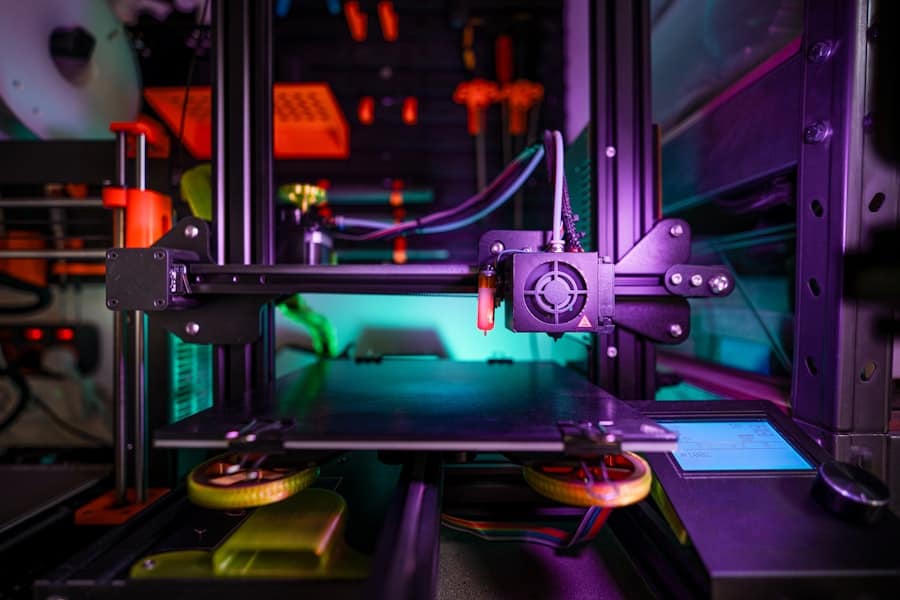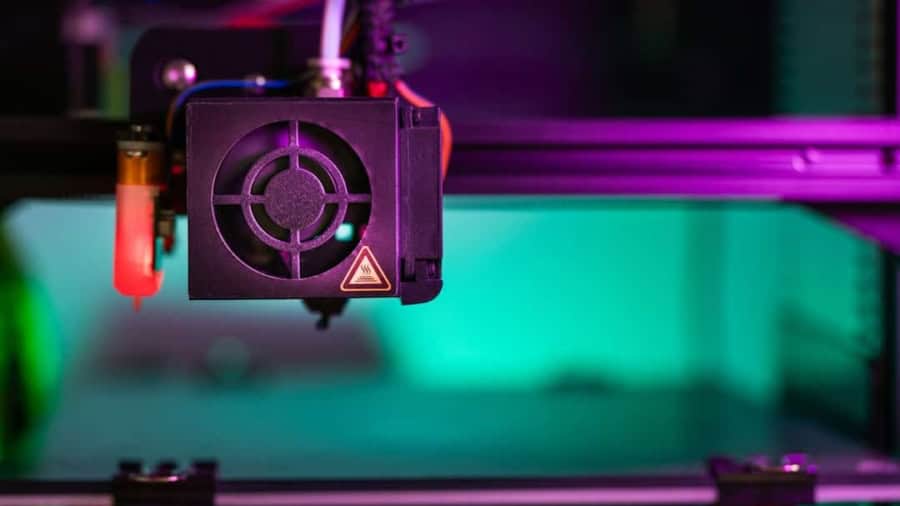Industrial robotic arms have become a cornerstone of modern manufacturing, revolutionizing the way products are assembled, packaged, and processed. These versatile machines are designed to perform a variety of tasks with precision and speed, often surpassing human capabilities in terms of consistency and endurance. The evolution of robotic arms can be traced back to the mid-20th century, when the first programmable robots were introduced.
Since then, advancements in technology have led to the development of sophisticated robotic systems that can be programmed for a multitude of applications, from welding and painting to assembly and material handling. The design of industrial robotic arms typically includes multiple joints and links that allow for a wide range of motion, mimicking the dexterity of a human arm. These robots are equipped with end effectors—tools or grippers that enable them to interact with their environment.
The integration of sensors and cameras has further enhanced their capabilities, allowing them to adapt to changing conditions on the production floor. As industries strive for greater efficiency and productivity, the role of robotic arms continues to expand, making them indispensable in sectors such as automotive, electronics, and consumer goods.
Key Takeaways
- Industrial robotic arms are used in manufacturing and automation to perform tasks such as welding, painting, and assembly.
- Challenges in industrial robotic arms’ efficiency include high maintenance costs, limited flexibility, and the need for constant monitoring and adjustments.
- AI integration in industrial robotic arms can improve efficiency by enabling predictive maintenance, optimized motion planning, and quality control.
- AI-enabled predictive maintenance uses machine learning algorithms to predict when maintenance is needed, reducing downtime and costs.
- AI-optimized motion planning uses algorithms to find the most efficient and safe paths for robotic arms, improving productivity and safety.
The Current Challenges in Industrial Robotic Arms’ Efficiency
Lack of Flexibility in Traditional Robotic Systems
One significant issue is the lack of flexibility in traditional robotic systems. Many robotic arms are designed for specific tasks and require extensive reprogramming or even physical modifications to adapt to new processes. This rigidity can lead to increased downtime during production changes, ultimately affecting the bottom line.
Many factories still rely on legacy systems that may not be compatible with modern robotics technology. This can create bottlenecks in production as companies struggle to synchronize human workers with robotic systems.
Prohibitive Costs for Smaller Manufacturers
The initial investment required for advanced robotic solutions can be prohibitive for smaller manufacturers. The high cost of acquisition, coupled with ongoing maintenance and training expenses, can deter businesses from fully embracing automation, leaving them at a competitive disadvantage.
The Integration of AI in Industrial Robotic Arms

The integration of artificial intelligence (AI) into industrial robotic arms represents a significant leap forward in enhancing their capabilities and efficiency.
This adaptability allows robots to perform complex tasks that were previously thought to be beyond their reach.
For instance, AI algorithms can analyze visual data from cameras mounted on robotic arms, enabling them to identify objects, assess their orientation, and adjust their movements accordingly. Moreover, AI-driven robotic arms can optimize their performance through machine learning techniques. By analyzing historical performance data, these systems can identify patterns and make adjustments to improve efficiency over time.
This self-optimizing capability not only enhances productivity but also reduces wear and tear on the machinery, leading to longer operational lifespans. As industries increasingly adopt AI technologies, the potential for robotic arms to operate autonomously and collaboratively with human workers becomes more feasible.
AI-Enabled Predictive Maintenance for Industrial Robotic Arms
One of the most promising applications of AI in industrial robotic arms is predictive maintenance. Traditional maintenance practices often rely on scheduled inspections or reactive measures after a failure occurs. However, these approaches can lead to unnecessary downtime and increased operational costs.
AI-enabled predictive maintenance leverages data analytics and machine learning algorithms to monitor the health of robotic systems continuously. By analyzing data from sensors embedded within the robots, AI can predict potential failures before they occur. For example, if a robotic arm’s motor shows signs of overheating or unusual vibrations, AI algorithms can flag these anomalies for further investigation.
This proactive approach allows manufacturers to address issues before they escalate into costly breakdowns. Additionally, predictive maintenance can optimize maintenance schedules based on actual usage patterns rather than arbitrary timelines, ensuring that maintenance is performed only when necessary. This not only saves time and resources but also enhances the overall reliability of robotic systems.
AI-Optimized Motion Planning for Industrial Robotic Arms
Motion planning is a critical aspect of robotic arm operation, determining how a robot moves from one point to another while avoiding obstacles and optimizing its path for efficiency. Traditional motion planning algorithms often struggle with complex environments or dynamic changes in the workspace. However, AI has introduced new methodologies that significantly enhance motion planning capabilities.
By utilizing deep learning techniques, AI can analyze vast amounts of data related to previous movements and environmental conditions to develop more efficient paths. For instance, an AI-optimized motion planning system can learn from past experiences to avoid collisions with other machines or human workers in real-time. This capability is particularly valuable in environments where multiple robots operate simultaneously or where human-robot collaboration is necessary.
Furthermore, AI can adapt motion plans on-the-fly based on changes in the workspace, such as the introduction of new materials or alterations in product design. This level of adaptability not only improves efficiency but also enhances safety on the production floor.
AI-Powered Quality Control in Industrial Robotic Arms

Quality control is paramount in manufacturing processes, as it directly impacts product reliability and customer satisfaction. Traditional quality control methods often involve manual inspections or sampling techniques that can be time-consuming and prone to human error. The integration of AI into quality control processes allows for real-time monitoring and analysis of products as they move through production lines.
Robotic arms equipped with advanced imaging systems can capture high-resolution images of products and use AI algorithms to detect defects or inconsistencies. For example, an AI-powered quality control system can analyze images of assembled components to ensure they meet specified tolerances and standards. If a defect is detected—such as a misaligned part or surface imperfection—the system can automatically reject the faulty item or alert operators for further inspection.
This level of precision not only reduces waste but also enhances overall product quality by ensuring that only items meeting stringent criteria reach customers. As industries continue to prioritize quality assurance, AI-driven quality control will play an increasingly vital role in maintaining competitive advantage.
The Impact of AI on Industrial Robotic Arms’ Efficiency
The impact of AI on the efficiency of industrial robotic arms is profound and multifaceted. By enabling predictive maintenance, optimizing motion planning, and enhancing quality control processes, AI significantly reduces operational downtime and increases throughput. Manufacturers that adopt AI technologies often report improved productivity levels as robots become more capable of handling complex tasks autonomously while minimizing human intervention.
Moreover, the integration of AI fosters a more collaborative environment between human workers and robotic systems. With AI-powered robots taking on repetitive or hazardous tasks, human employees can focus on higher-value activities that require creativity and problem-solving skills. This shift not only enhances job satisfaction but also leads to better overall performance within manufacturing teams.
As industries continue to evolve towards greater automation, the synergy between AI and industrial robotic arms will be crucial in driving efficiency gains across various sectors.
The Future of AI in Industrial Robotic Arms
Looking ahead, the future of AI in industrial robotic arms appears promising as technological advancements continue to unfold at a rapid pace. Emerging trends such as collaborative robots (cobots) are set to redefine how humans and machines interact on the factory floor. These robots are designed to work alongside human operators safely and efficiently, leveraging AI capabilities to enhance their performance while ensuring worker safety.
Additionally, advancements in edge computing will enable real-time data processing directly on the robotic arms themselves, reducing latency and improving responsiveness in dynamic environments. As AI algorithms become more sophisticated, we can expect even greater levels of autonomy in robotic systems, allowing them to make complex decisions without human intervention. Furthermore, as industries increasingly embrace sustainability initiatives, AI-driven robotic arms will play a crucial role in optimizing resource usage and minimizing waste throughout production processes.
By continuously learning from their environments and adapting their operations accordingly, these advanced systems will contribute significantly to creating more efficient and sustainable manufacturing practices. In conclusion, the integration of AI into industrial robotic arms is transforming manufacturing landscapes by enhancing efficiency, flexibility, and quality control while paving the way for future innovations that promise even greater advancements in automation technology.
In a recent article on enicomp.com, the importance of engineering processes in startups is highlighted in “To Buy Time for a Failing Startup, Recreate the Engineering Process.” This article discusses how restructuring the engineering process can help struggling startups regain momentum and succeed in the long run. This topic is relevant to the discussion of industrial robotic arms’ efficiency, as both involve the optimization of processes to improve overall performance. To read more about this insightful article, click here.
FAQs
What is the role of AI in improving industrial robotic arms’ efficiency?
AI plays a crucial role in improving industrial robotic arms’ efficiency by enabling them to make real-time adjustments, optimize their movements, and perform complex tasks with greater precision and speed.
How does AI enhance the capabilities of industrial robotic arms?
AI enhances the capabilities of industrial robotic arms by enabling them to learn from experience, adapt to changing conditions, and make autonomous decisions to optimize their performance.
What are some specific ways in which AI improves the efficiency of industrial robotic arms?
AI improves the efficiency of industrial robotic arms by enabling predictive maintenance, quality control, task optimization, and human-robot collaboration, among other capabilities.
What are the benefits of using AI in industrial robotic arms?
The benefits of using AI in industrial robotic arms include increased productivity, improved quality, reduced downtime, enhanced safety, and the ability to handle more complex tasks.
How does AI contribute to the advancement of industrial automation?
AI contributes to the advancement of industrial automation by enabling robotic arms to perform a wider range of tasks, adapt to changing production needs, and work more effectively alongside human workers.

